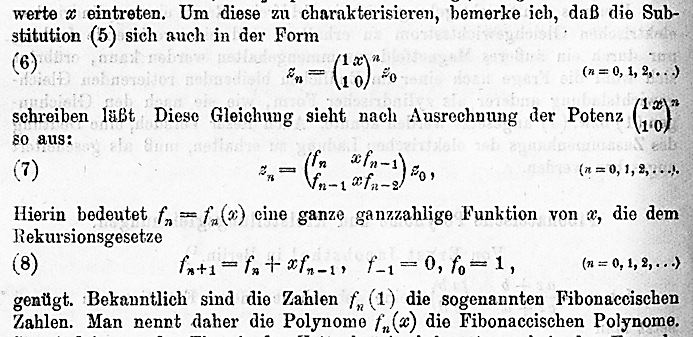Our story so far: Having stumbled upon the Jacobsthal numbers, 1, 3, 5, 11, 21, 43, 85, 171, 341,…, I idly asked, “Who was Jacobsthal?” Keith Matthews promptly responded with a wealth of biographical information, even arranging to have an obituary translated from the Norwegian. So I asked, “Where did Jacobsthal mention these numbers?” and Barry Cipra quickly supplied a reference: “Fibonaccische Polynome und Kreisteilungsgleichungen” in Sitzungsberichte der Berliner Mathematischen Gesellschaft 17 (1919-1920), 43-57.
I dare not ask another question, lest someone else go running off to do more of my library errands for me. Embarrassing.
Unfortunately, though, when I look into the Jacobsthal paper, further questions are inescapable. Nowhere in the article, as far as I can tell, does Jacobsthal list any of the numbers in the sequence that now bears his name. Admittedly, I don’t actually read German; I just make it up as I go along. But, ungebildet as I am, I can at least recognize numerals, and 1, 3, 5, 11, etc. are not to be found. The closest approach is in this passage:

Here we see the recurrence relation f(n+1) = f(n) + xf(n–1), which produces the Jacobsthal sequence in the case when x = 2. But nowhere does Jacobsthal mention the specific case of x = 2, or any other specific example for that matter, except for noting that x = 1 corresponds to the “so-called” Fibonacci numbers.
So once again I’m left wondering: Exactly how did Jacobsthal’s name get attached to the numbers 1, 3, 5, 11, 21, 43…?
Incidentally, Google Language Tools offers a wonderful translation of Jacobsthal’s title: “Fibonacci polynomials and circling hurrying equations.”